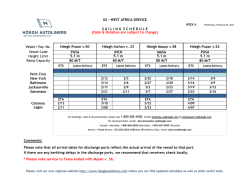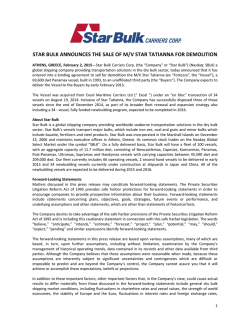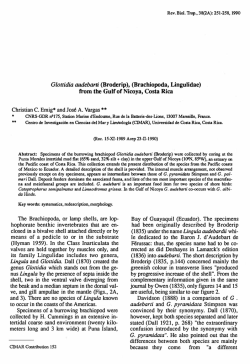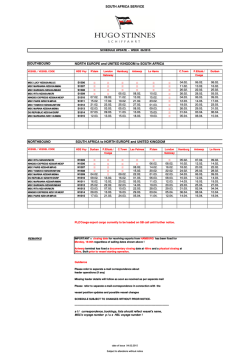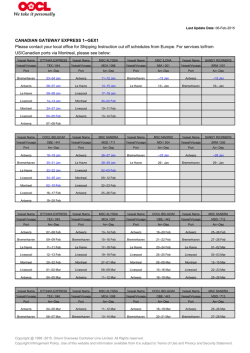
File earthworm lab4
Name. 52 Date. Anatomy of the Earthworm BACKGROUND The earthworm is the best-known member of the phylum Annelida, the segmented worms. Annelids are bilaterally symmetrical, and their bodies are divided into segments both externally and internally. They have a tube-within-a-tube body structure. The outer tube is the body wall, while the inner tube is the digestive tract. The c,wity between the outer and inner tubes is the coelom. OBJECTIVES In this activity you will: 1. Study the external and internal anatomy of the earthworm. 2. Observe some characteristics of annelids. MATERIALS preserved earthworm (Lumbricus dissecting tray scalpel dissecting scissors straight pins sp.) hand lens or dissecting forceps probe microscope . dissecting needles PROCEDURES AND OBSERVATIONS Part I. External Anatomy of the Earthworm a. Examinethe external structure of the earthworm. The thickened region, the clitellum, is closer to the anterior end of the animal. The clitellurrisecretes a cocoon around the fertilized eggs. The upper, or dorsal, surface of the worm feels smooth, while the lower, or ventral, surface feels bristly. Determine which is the dorsal and which is the ventral surface of the worm. In addition to the openings in the first and last segments of the body, the earthworm has sev~ral othet types of openings found in most segments. On the sides of most segments there are excretory pores. On the ventral surface of se~ment 14 are pores through which eggs are dischar~ed. On the ventral surface of segment 15 are pores through which sperm are discharged. 1. Why does the ventra"1surface feel bristly? c. Using a hand lens or dissecting microscope, examine each surface of the worm. 4. Can you see any of the openings described above? If so, which ones? 2. How many bristles are on each segment? b. ( Examine the anterior and posterior ends of the worm. 3;"What are the two openings you see? ~. ~\.~~, 227 Part II. Internal Anatomy of the Earthworm a. Place your earthworm in the dissecting tray with the dorsal surface up and the anterior end facing away from you. Place pins through .the first and last segments to hold the worm in position. In making an incision you must be careful to cut only the body wall. If you cut too deeply, you will damage the internal organs. The incision should be slightly to one side of the midline. Using a sharp scalpel,.make an incision from behind the ditellum to the anus. Then turn the tray around and extend the incision to the mouth. Holdingthe body wall with your forceps, use a scalpel or pin to cut the membranes that separate the segments of the earthworm. Starting at the anterior end, separate the body wall along the cut, and pin it down, as shown in Figure 1. FIGURE 1 forceps 1. How does the internal segmentation of the earthworm compare with the external segmentation? . .,The mouth of the earthworm opens into the muscular pharynx, which sucks food into the digestive tract. The pharynx is found within the first 5 or so segments. See Figure 2. Posterior to the pharynx is the esophagus, which extends for about 10 segments. The esophagus is a narrow tube that widens where it enters the crop, a thin-wall orga.n in which food is stored temporarily. Posterior to the crop is the thick-walled gizzard, where food is broken down mechanically. From the gizzard, food passes into the intestine, which extends posteriorly to the anus. b. Beginning at the anterior end of the worm (segment 1), identify the organs of the digestive systerti. Use a probe to feel the relative thicknesses FIGURE2 seminal receptacle of the walls of the crop and gizzard. Use your scalpel to make a cross section through the intes- tine about half,wayalongits length.Examinethe cu.tend of the intestine with a hand lens or dis-. secting microscope. dorsal blood vessel . gizzard ventral blood vessel 1 22B 5 10 15 20 25 . ' Name, Date. 2. Draw a cross section of the earthworm , through the intestine. Label the body wall, coelom, intestinal wall, and intestinal opening. If you can see the typhlosole, include it in your drawing and label it. The earthworm has a closed circulatory system. Blood is pumped through vessels by five pairs of aortic arches, or hearts. The aortic arches encircle the esophagus between sewnents 7 and 11. From the aortic arches, blood flows into the ventral vessel, which nms beneath the organs of the digestive tract. The ventral vessel branches and divides into small~r vessels, eventually fomling capillaries that serve the cells of the animal. The capillaries join, forming larger vesse Is. Blood is returned to the aortic arches through the dorsal vessel, whichnms along the top of the digestive tract c. Identify the dorsal vessel/' which runs along the top of the intestine. Follow it forward toward the esophagus. Gently move aside any organs that obscure your view so that you can see the aortic arches around the esophagus: Lift the cut end of the intestine so that you can see the ventral vessel, which runs along the ventral surface of the . digestive tract. 3. Describe the dorsal vessel, arches, and the ventral vessel. the aortic I 4. Can you see branches of the dorsal and ven" tral vessels? If so, where? Earthworms are hermaphroditic-they contain both male and female reproductive structures. However, self-fertilization does not occur. When 'earthworms mate, they exchange sperm, which then fertilize the ~ggs produced by the ovaries. Spe,rm are produced and stored in the seminal vesicles. Sperm received from another animal in mating are stored in the two pairs of seminal receptacles. d. TI).emost visible parts of the reproductive system are the pair of three-lobed seminal vesicles on either side of the esophagus. The seminal receptacles are in segments 9 and 10. The two pairs of testes are on the walls that separate segments 10 and 11, and the,ovaries areJn segment 13. Try to identify the various parts of the reproductive system. Use a hand lens or dissecting microscope where necessary. 5. List the parts of the reproductive system, that you could see. The excretory organs of earthworms E\re the nephridia, which are tiny; coiled, white tubules. Pairs of nephridia are' found in all segments except the first three and the last. e. Using a hand lens or dissecting microscope, try to identify a nephridium. The earthworm has a central nervous system made up of a brain and a pair of solid, ventral nerve cords. The. brain is actually a pair of fused gat:lglia,and the nerve cords enlarge into ganglia in each segment A peripheral nervous system consisting of nerves branching from the central nervous system serves all part of the body. f. The brain is a small mass of white tissue found on the dorsal surface of the anterior end of the pharynx. Extendingfrom the brain and running around either side of the pharynx are nerve cords. Gently move the pharynx and trace the nerve cords. Beneath the pharynx is another pair of ganglia. Extendingfrom these ganglia are the pair of ventral nerve cords. Gently move any organs that are in the way, and identify as many parts of the nervous system as you can. ' 6. What parts of the nervous system could you see? 229 CONCLUSIONS AND APPLICATIONS 1. What advantage does hermaphroditism have for slow-moving organisms such as the earthworm? 2. In what ways does the internal structure of the earthworm show development of a specialized "head' end? 3. In tenns of what you actually observed structure of the earthwonn. in your dissection, describe the tuoe-within-a-tube body 4. How do you think the bristles on each segment function in locomotion? 5. List the general characteristics of annelids. (Use your textbook or an outside reference book to make sure you have all the important characteristics.) Then describe how the structures and characteristics of the earthworm compare with those of annelids in general. ( (
© Copyright 2025
![[Click here and type place and date] - EMSA](http://s2.esdocs.com/store/data/000467641_1-f802c01f4a8923c9324d9c92cefbeb6b-250x500.png)
